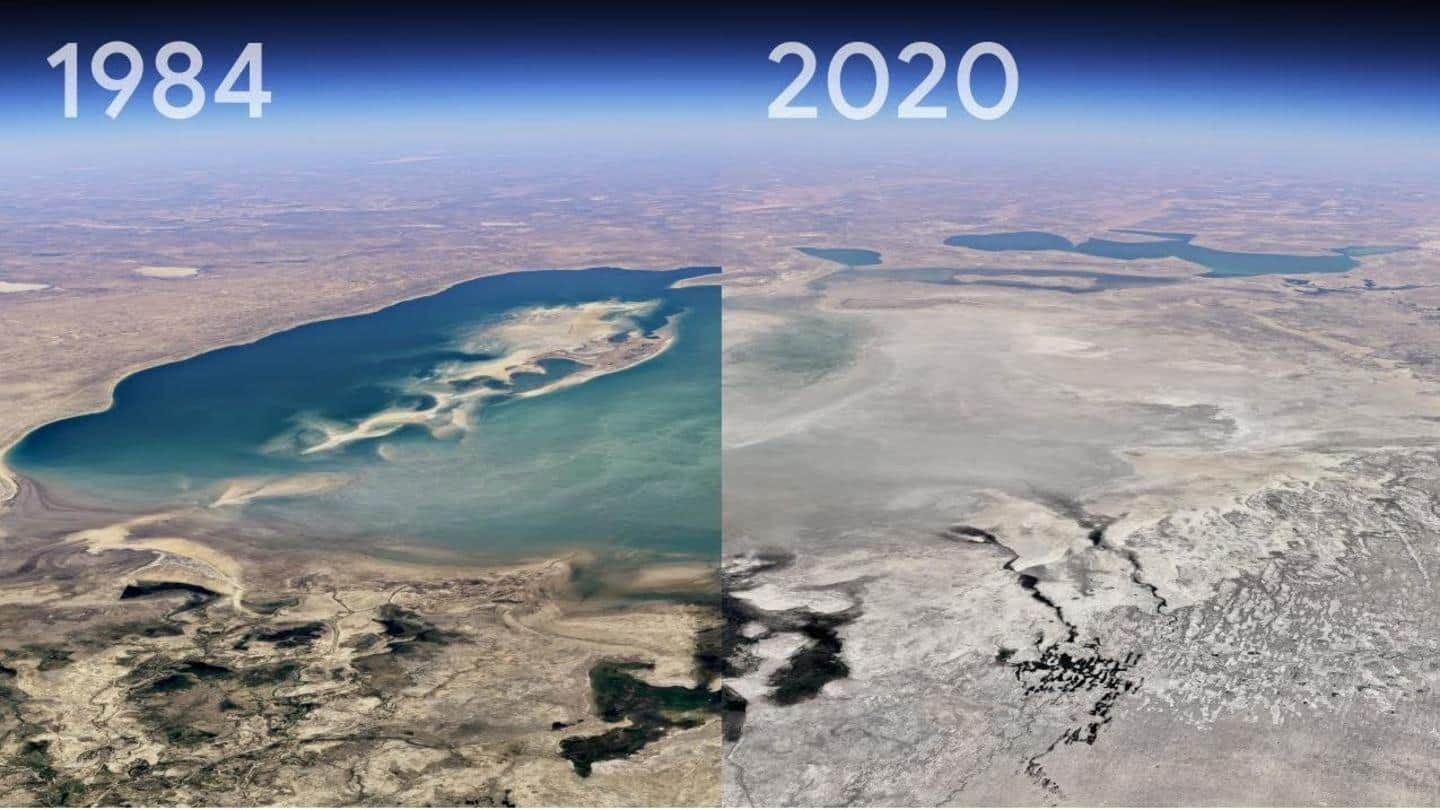
Google Earth's Timelapse feature lets you watch Earth's 40-year evolution
What's the story
So far, Google Earth has served as an indispensable resource for anyone wanting to view any nook and cranny on Earth via satellite imagery. Now, in the first major update in four years, Google Earth has added another dimension to its platform—time. Using the new Timelapse feature, people can view nearly four decades of planetary evolution through data agglomerated from satellites.
37 years of data
Timelapse touted as biggest update to Google Earth since 2017
Since its launch in 2001, Google Earth has constantly added new features to make the platform more informative. The company is calling the Timelapse feature the "biggest update to Google Earth since 2017". The technology for the Timelapse feature was created in collaboration with experts from Carnegie Mellon University's CREATE Lab. The incorporated data was collected over 37 years using 24 million satellite images.
Pixel crunching
Earth Engine processed video for over 2 million hours
The company created the world's largest video of Earth on its Earth Engine, a cloud platform for geospatial analysis. The company processed a whopping 20 petabytes of satellite images for over two million hours to create a 4.4 terapixel sized video mosaic. To help you digest that data, it's the equivalent of over half a million videos recorded in 4K.
Sands of time
Timelapses were generated for regions that witnessed significant geographic change
People can use Google Earth to "watch time unfold" via this link (https://earthengine.google.com/timelapse/) or by navigating to the Google Earth website and clicking the ship wheel button which redirects you to an interactive tour on the Voyager platform. The timelapse videos have been generated for areas that saw significant geographic change such as metropolitan cities, polar ice caps, and oceans.
Simplified navigation
Timelapses are curated under change-based categories
To simplify navigation, Google Earth has curated the timelapse videos on its website under various categories such as "Changing Forests," "Fragile Beauty" (meandering rivers), "Warming Planet" (polar regions), and "Urban Expansion" (metropolitan development). Each of the 800+ Timelapse videos has been uploaded to the Google Earth Engine. They can be viewed here (https://developers.google.com/earth-engine/timelapse/videos) sorted by themes and regions.
Immense scope
Earth Engine allows videos to be seen in 3D, downloaded
The individual videos on Google Earth Engine can be viewed in either 2D or 3D. Google has graciously provided an option to download each video separately. It will be interesting to see how scientists, data analysts, and researchers leverage the colossal volume of data that Google Earth has thrown open for public access.